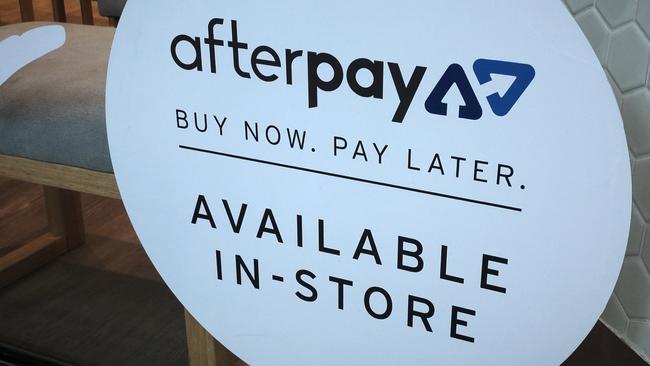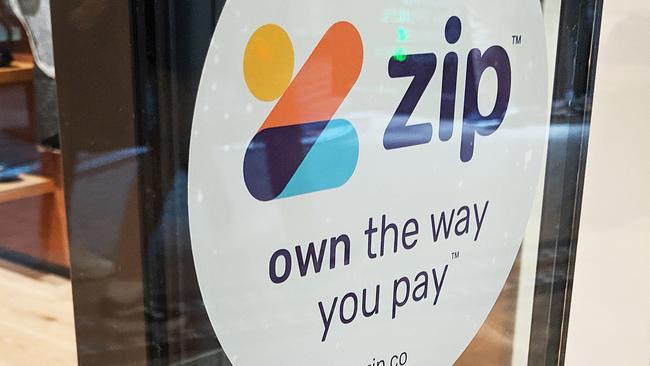Rising use of Afterpay and Zip signals end of credit cards dominating personal lending
Credit cards may be on the way out as young Australians in particular flock to a more “attractive” payment method.

Costs
Don't miss out on the headlines from Costs. Followed categories will be added to My News.
The rise of buy now, pay later payments is signalling the potential slow death of credit cards, with thousands of consumers everyday switching to zero interest lending services.
Figures from the Reserve Bank show at the end of June, there were 1.3 million less credit cards within the Australian payments system, with cardholders wiping $4.2 billion of debt since the onset of COVID-19.
The reduction in accrued debt coincides with the country’s major buy now, pay later companies recording huge rises in customer numbers, particularly in younger shoppers who are choosing zero interest instalment payments as an alternative to credit.
On Thursday, Afterpay and Zip released end-of-year financial results, with both major fintechs more than doubling transactions volumes and active membership bases.


Afterpay over the course of the 2020 financial year increased its active global customer network to 9.9 million from 4.6 million, generating $11.1 billion in sales for the year.
Zip had a similar rise, with total transaction volumes for the year rising 87 per cent compared with the prior year to $2.1 billion, while its customer base grew more than 60 per cent to approximately 2.1 million users.
The surging use of buy now, pay later has already garnered the interest of major financial heavyweights, with Commonwealth Bank throwing millions of dollars behind Swedish buy now, pay later company Klarna to lure it to Australian shores.

Westpac has also invested millions of dollars into Zip, while Afterpay’s global expansion has attracted investment from Chinese telco giant Tencent.
RateCity research director Sally Tindall said the increased use of digital instalment payments was partially to blame for credit card activity falling.
“Buy now, pay later services have been accelerating at breakneck speed, giving the once-fashionable credit card sector a run for its money,” she said.
“Platforms such as Afterpay have been an extremely attractive choice for younger Australians who are wary of credit cards but still want some access to credit.”

Afterpay and Zip have predominantly been used through e-commerce websites; however, a growing number of physical retailers are now offering buy now, pay later as an in-store payment method.
Major retailers such as Myer, David Jones and BigW allow customers to pay via Afterpay or Zip within store.
Ms Tindall noted potential regulation of the industry could stifle its current growth trajectory.
“Right now, the buy now, pay later providers are seemingly unstoppable with ambitious expansion plans, backed by a proven ability to drive retail sales,” she said.
“The exceptionally simple sign-up process makes it easy to try, and for many people, the idea of not having to pay for something upfront never grows old.”
The Australian Finance Industry Association is looking to implement a code of conduct for the buy now, pater industry, which would stamp out activity that is deemed detrimental to consumers.
Originally published as Rising use of Afterpay and Zip signals end of credit cards dominating personal lending

